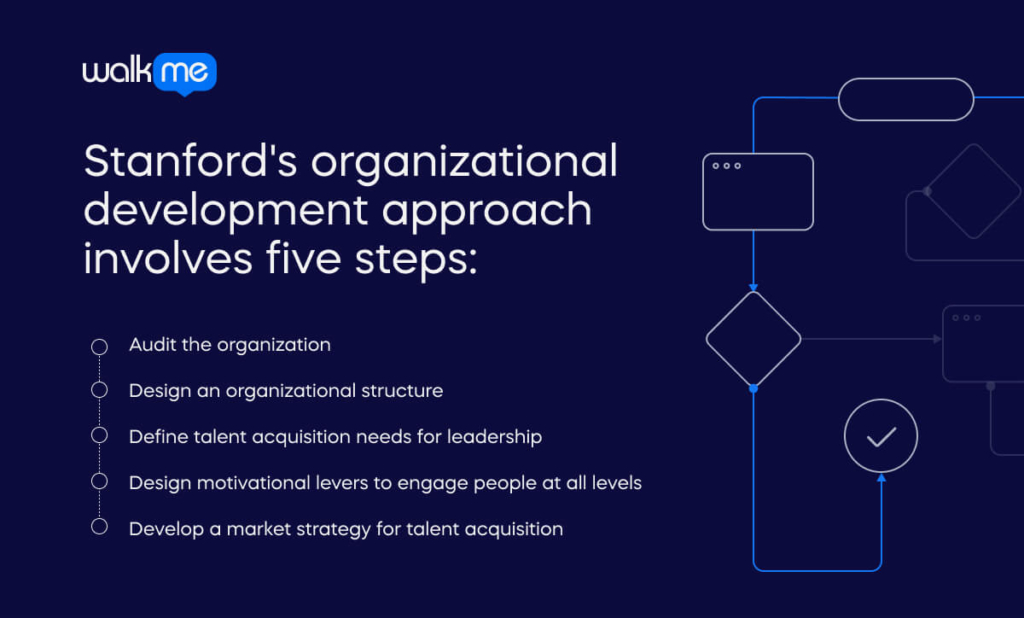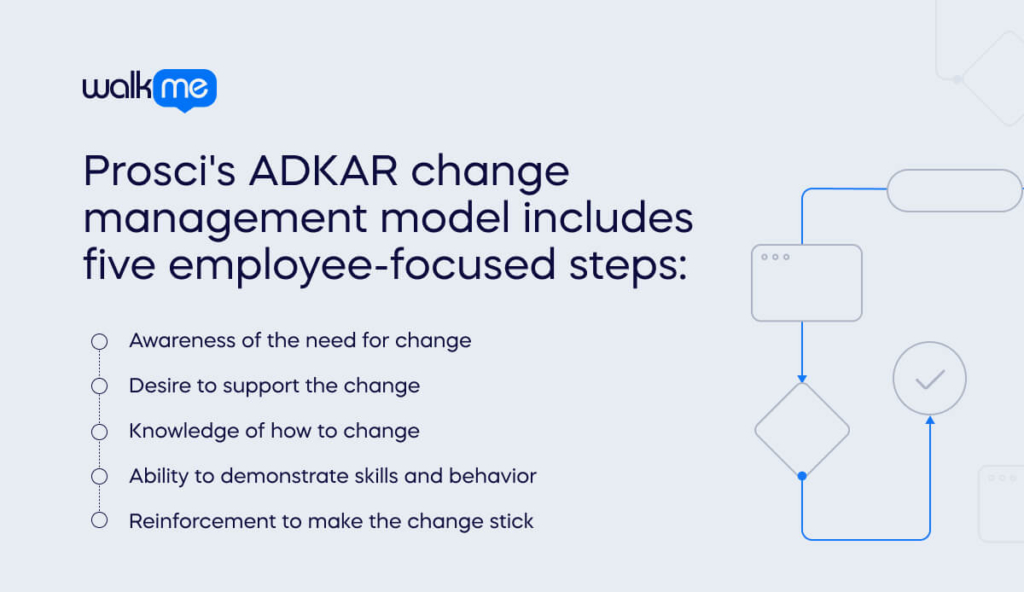Organizational development vs. organizational transformation – is there really a difference?
And if there is a difference, does it matter?
Below, we’ll learn the answer to these questions and more, including:
- The definitions of organizational development and transformation
- The key differences between the two concepts
- Whether that difference matters
- When to employ each approach
And more.
Let’s start by examining these two concepts in detail.
Organizational Development vs. Organizational Transformation: The Key Differences
To see the distinction between these two concepts, we’ll look at some definitions.
Organizational development is a formal business discipline dedicated to planning and executing organizational changes.
Some definitions of organizational development include:
- “Organizational Development is the process of aligning human capital strategy with the mission, vision, values, and strategy of the organization,” according to the Stanford Business School.
- “Organization development,” says the Organization Development Network, is planned, organization-wide, managed from the top, aimed at increasing organization effectiveness and health, and executed through planned interventions in organizational processes.
- “Organizational development (OD) is the process through which an organization improves its internal capacity to meet its current and possible future requirements,” says HR SaaS platform Keka.
In short, organizational development – or organization development – has the same aims as change management.
Both disciplines are designed to improve and enhance an organization’s capabilities and effectiveness.
“Organizational transformation,” when used in business discussions, refers to organizational changes that are designed to transform the very nature of a business.
Its aims can include:
- Improved organizational performance
- Enhanced organizational capabilities
- Reinventing the organization’s business model
- Overhauling processes, systems, and operations
The key difference between “organizational development” and “organizational transformation” is that organizational development is a business discipline, while organizational transformation is a process.
In other words:
- Organizational development is, like change management, a business discipline devoted to strategic organizational change
- Organizational transformation is a set of organizational changes designed to transform a business from the ground up
Organizational development professionals, therefore, manage organizational changes and transformations.
Change Management vs. Organizational Development
There are several fields devoted to managing and executing organizational transformation.
These include disciplines such as:
- Change management
- Organization development
- Organizational development
There are differences in each field, but there is also a great deal of overlap.
Kurt Lewin, for instance, is often cited as being the founding father of both change management and organization development.
And, as mentioned, all fields share many of the same aims.
However, over the years, different practitioners have adopted different approaches to change management and organization development.

Stanford’s approach to organizational development, cited above, follows a five-step process:
- Audit the organization
- Design an organizational structure
- Define talent acquisition needs for leadership
- Design motivational levers to engage people at all levels
- Develop a market strategy for talent acquisition
The consulting firm Transforming Solutions Inc. follows a six-step “process and organizational transformation methodology”:
- Clarify project objectives and outcomes
- Define and understand the business context
- Validate and define current processes
- Analyze the processes
- Define improved processes
- Develop implementation plans and begin to implement recommendations
Many frameworks that lie within the domain of change management, though, focus on change at the individual level.
That is, they emphasize the need for motivating and engaging employees.

Prosci’s ADKAR change management model is one such model. It consists of five steps, all of which focus on employees:
- Awareness of the need for change
- Desire to support the change
- Knowledge of how to change
- Ability to demonstrate skills and behavior
- Reinforcement to make the change stick
Other change frameworks, such as John Kotter’s 8-step model, also focus on motivating and enabling employees to change.
Organizational Transformation vs. Organizational Change
In many cases, organizational change and organizational transformation are used interchangeably.
However, the key differences between these two terms can also be found in the key words: “transformation” vs. “change.”
That is:
- Organizational transformation implies deep, wide-spread organizational changes, usually designed to improve organizational effectiveness and performance
- Organizational change indicates some business change that affects the organization itself
Organizational changes, therefore, can be small, extensive, or anywhere in between.
A change that is too minor to impact the organization as a whole, however, would not be considered an organizational change.
Changes that only occur within a department, for instance, would not affect the organization. Such changes would require limited management and would not be viewed as an organizational change.
Some examples of organizational change would be:
- Strategic changes
- Digital transformation and digital product adoption
- Changes to the corporate culture
- Rebranding
These changes would affect the entire organization to some extent. And they are large enough to require organizational change management, so they would be labeled “organizational changes.”
Technically speaking, “organizational transformations” are transformative – they reshape the very nature of the organization.
However, as mentioned, many business professionals use the terms interchangeably.
It is useful to bear this in mind when researching the topic or engaging in discussions with change management professionals.
